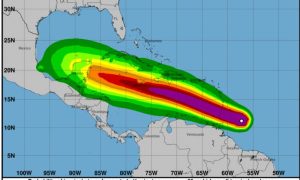WASHINGTON: NASA successfully launched a tiny satellite from New Zealand on Saturday, tasked with the mission to enhancing climate change prediction and measuring heat escaping from Earth’s poles for the first time.
Named PREFIRE, the shoe box-sized satellite was deployed into orbit aboard an Electron rocket manufactured by Rocket Lab. The launch took place from Mahia, located in the north of New Zealand. PREFIRE aims to provide crucial data that will enhance scientists’ understanding of climate dynamics, particularly in the polar regions.
Karen St. Germain, NASA’s earth sciences research director, highlighted the importance of the mission. “This new information — and we have never had it before — will improve our ability to model what is happening in the poles, what is happening in climate,” Karen St. Germain told a news conference.
The satellite will take infrared measurements from high altitudes above the Arctic and Antarctic, directly assessing the heat emitted by the poles into space. Tristan L’Ecuyer, a mission researcher affiliated with the University of Wisconsin, Madison, emphasized the significance of this data in understanding Earth’s temperature regulation.
“This is critical because it actually helps to balance the excess heat that’s received in the tropical regions and really regulate the earth’s temperature,” L’Ecuyer explained. “And the process of getting the heat from the tropical regions to the polar regions is actually what drives all of our weather around the planet.”
PREFIRE will also examine how factors such as clouds, humidity, and ice melting contribute to heat loss from the poles. Previously, climate change models relied on theoretical assumptions rather than empirical observations, noted L’Ecuyer.
“Hopefully we will be able to improve our ability to simulate what sea level rise might look like in the future and also how the polar climate change is going to affect the weather systems around the planet,” he added.
St. Germain emphasized the value of small satellites like PREFIRE in addressing specific scientific inquiries cost-effectively, distinguishing them from larger, more general-purpose satellites.
“Small satellites like this one are a low-cost way to answer very specific scientific questions,” said St. Germain. “NASA needs both.”


























